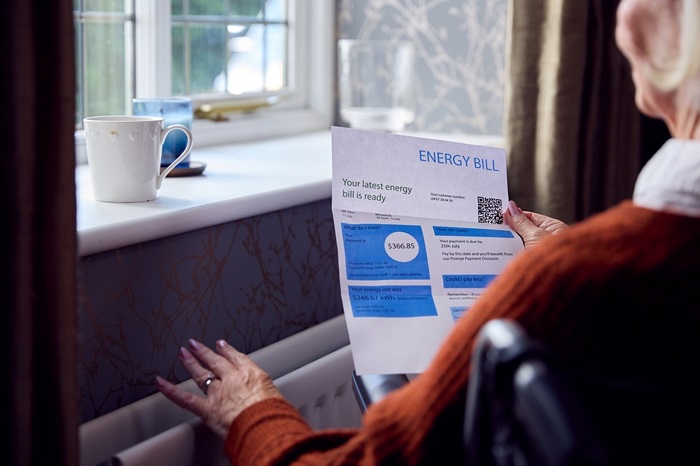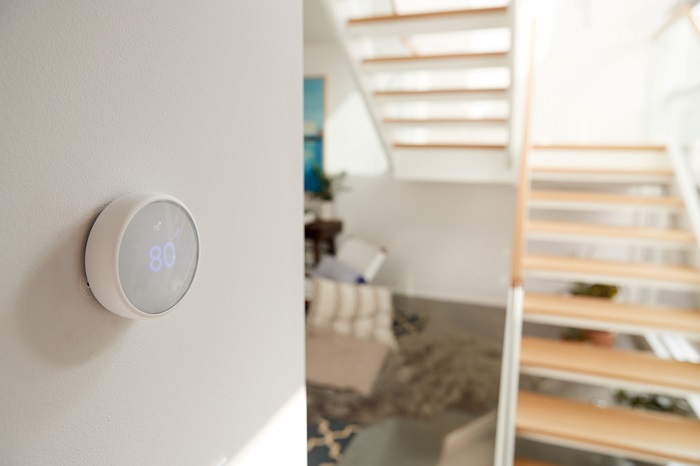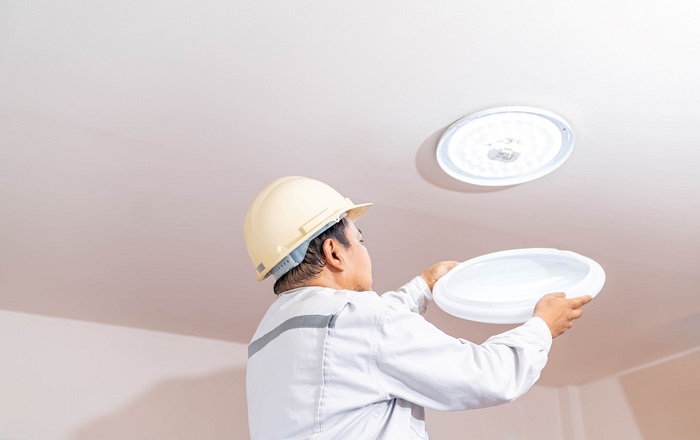
This year, daylight saving time ends on Nov. 6, when we roll back our clocks by one hour at 2 a.m., returning to standard time. With this time change, we mentally prepare ourselves for the possibility that it’ll be dark outside by the time we leave work. Now that we’re entering the season for colder weather and reduced daylight, we need to be ready for changes in our energy consumption. Generally, we’re likely to use more energy early in the day, when the temperature is colder and we’re getting ready for work and school, and between 5 p.m. and 7 p.m. after the sun sets.
While we’ve shared evergreen ways to save on your electricity bill, here are seven tips to save money on electricity when daylight saving time ends.
Turn Down the Thermostat

Colder weather and shorter days as a result of daylight saving time ending means an increase in furnace and water heater usage. Space and water heating are the most significant contributors to your electricity bill. As a result, you should control the urge to turn up the thermostat if you want to save electricity. Of course, we all enjoy a steamy shower and a cozy living room during the colder months, but this indulgence can get expensive.
One solution you might want to consider investing in is a smart thermostat, which lets you control it remotely through a smartphone, tablet, or computer. You can also program it to adjust the temperature based on your daily usage or living patterns. For example, you can set the thermostat to heat your home around the time you wake up instead of all night in order to save on electricity.
Schedule Routine Maintenance
Mark the end of daylight saving time as a reminder to schedule routine maintenance for heating systems. The furnace, boiler, heat pump, or any other type of heating system you have at home should go through constant testing and cleaning. If the heating system has air filters, you should check if they’re clogged. Any restriction of airflow through the filter can reduce the heating system’s efficiency, resulting in expensive electricity bills.
Find and Seal Leaks
You might have holes in your home that allow heat to escape, resulting in a spike on your electricity bill. The usual suspects for leaks include gaps in chimneys, vents, pipes, windows, and recessed lights. Seal these leaks to enjoy improved heating performance and efficiency during the winter. While you’re at it, consider adding extra insulation around the windows, in between walls, and in the attic to minimize drafts.
Make the Most Out of Off-Peak Hours
Once daylight saving time ends in November, peak hours for the electricity tariff are around 4 to 9 p.m. during the winter. One way to minimize electricity usage is to take advantage of off-peak hours. Check your electricity bill to compare the difference between peak and off-peak hours, and confirm the peak hour timing. Any electricity usage during off-peak hours, such as using a vacuum cleaner, dishwasher, or coffee machine, can save you on your electricity bill.
Lower Lighting Costs

As we mentioned before, we know daylight saving time ends when it gets dark outside earlier, so our lights are on longer. Although a single light bulb isn’t a significant source of energy usage, all the lights in your home can add to your utility bills. Fluorescent light bulbs can use 60 to 100 watts. If you leave the bulb switched on for 10 hours a day, that adds up to 300 kWh.
As a solution, replace all the light bulbs in your house with energy-efficient LED bulbs that are ENERGY STAR certified, which use around 75 percent less energy. Other ways to reduce lighting are to avoid over-lighting the room and installing dimmers.
Invest in Solar
While you get to celebrate the extra hour of sleep on Nov. 6 when daylight saving time ends at 2 a.m., your celebrations might be short-lived when you receive your monthly electricity bill. Most people don’t realize the impact of losing that single hour of sunlight in the evening. Most of the heating systems in your home are going to use more energy as a result of reduced sunlight.
While there are several ways to reduce electricity, investing in solar is a more long-term approach to saving on your energy bills. You’ll have to pay upfront costs, but the time frame until you can generate a positive ROI for investing in solar power can be short. Investing in solar also helps you future-proof your property and become self-reliant for your energy needs. You also get to minimize your impact on the environment by reducing greenhouse gas emissions and mitigating climate change.
Use Energy-efficient Appliances
Luckily, the end of daylight saving time also coincides with holiday deals and discounts on appliances. A great way to reduce your electricity bill this year is to replace your appliances with energy-efficient ones.
Look for ENERGY STAR-certified washing machines, dishwashers, boilers, and other devices. Using ENERGY STAR-certified appliances can save you an average of 20 percent on your electricity bill. As an added benefit, you can minimize your carbon footprint and waste less water.

